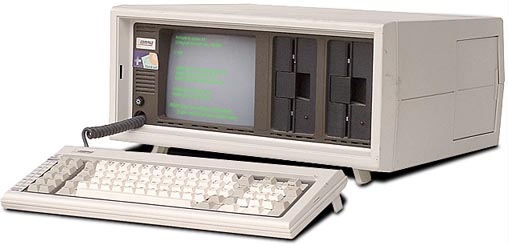Growing Independent: Laptop to Smartphone to Wearable
When does a personal technology - a computer, a smartphone, a watch - "grow up"? There is a slow but continuous process I have observed with every new personal computing technology.
- Stage 1 - Child: The new technology provides unprecedented flexibility. It allows you to do just a few new things, but its real appeal is allowing you to do old things on the go. It does so by being a mobile accessory to, or child of, existing "stationary" technology.
- Stage 2 - Teenager: The new technology slowly gains independence, able to do more and more functions without reverting to the mothership.
- Stage 3 - Adult: The new technology is able to function 100% independently, standing on its own.
- Stage 4 - Parent: The now not-so-new technology becomes standard, leading to a new more mobile technology which is now just a child of the existing technology.
Rinse, wash, repeat.
Laptops
The first laptops were large, clunky, had limited to no battery life, and were very weak, but they allowed you to take your work with you. I clearly remember the first Compaq portable I saw; it belonged to my college physics professor in Canada. It had a tiny screen, an enormous case, a keyboard that snapped on top to protect the screen and two disk drives, and weighed more than most suitcases.

But, it was a portable all-in-one. You did most of your real work on your desktop, but when you needed it, you had portability.
Smartphones
The first iPhones in 2007-2009 (and the Palm and Handsprings before them) were just like an iPod; they required a Mac or PC to connect to to update, backup, or even activate. These devices were not independent computers; they were children of your real computer.
Over time, the number of activities that required tethering began to shrink. The largest and dependency, over-the-air (OTA) updates of the operating system, began to be available only in 2011, less than four years ago.
Even the most recent Apple update, iOS 8, requires significantly more space to do over-the-air than tethered to the computer, effectively requiring many people to use their computer to update their phone. iCloud Backup is even younger. Without it, you had to connect to the "mothership" computer and back up regularly, or risk losing data.
The once-portable laptop, which was nothing more than an appendage to your "main" computer, had become the stationary mothership to the mobile smartphone.
At this point, with the exception of those big updates (a problem that is supposed to be fixed this year with iOS 9), the iPhone has become fully independent, needing a computer only for repair and maintenance (and jailbreaking, for those who want it) tasks. The next inevitable step is... parenthood.
Wearables
The first smartwatches depend on a nearby smartphone to provide network connectivity, data, and most critical functionality. They are children. The inevitable next step is the provision of basic features that allow some free-range parenting for the device.
According to 9to5Mac, the next major Apple Watch release, due in 2016, will have a front-facing camera and its own WiFi chip and antennae. That is a very long way from shooting videos or communicating over LTE networks. It is not adulthood, but it most certainly is a big step up in independence.
Eventually, years down the line, when the watch is fully independent, what even more portable device will be tethered to the then-relatively-stationary watch?